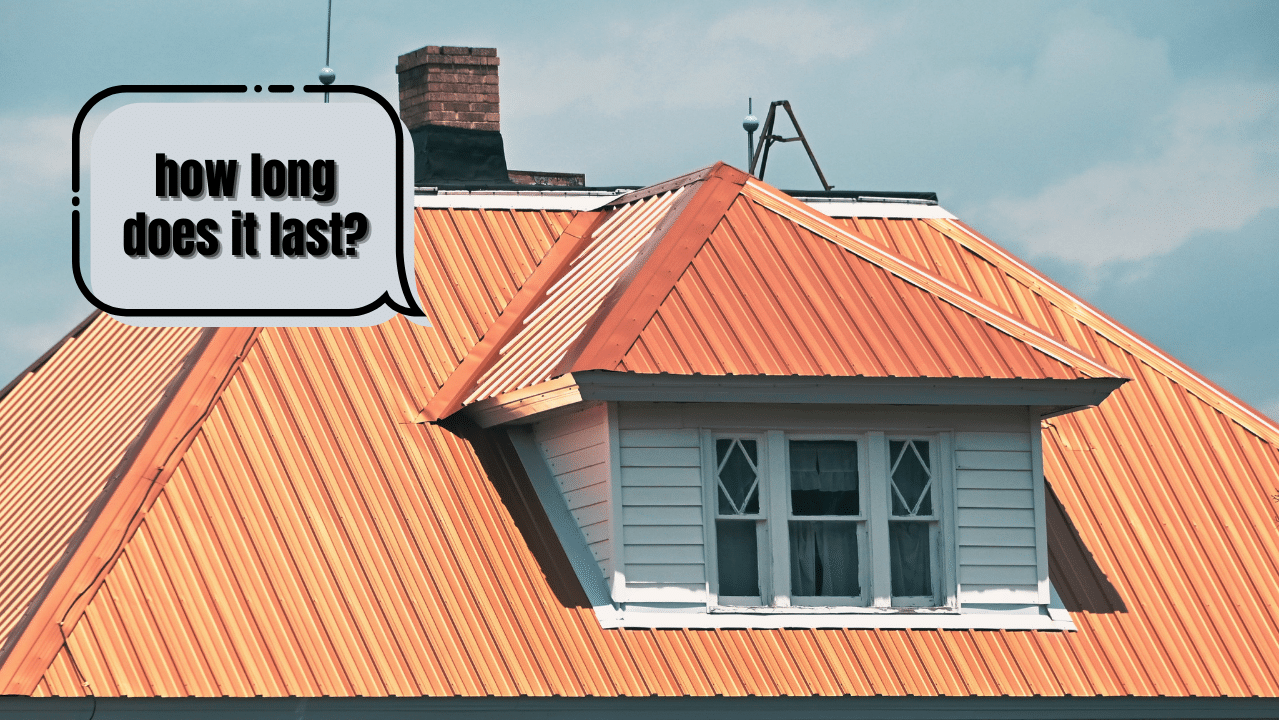“How long does a roof last?” is often asked when considering the safety and cost implications for a new or existing building. Maybe you need to replace one type of roof with a different one and you want to compare the lifespans of different roof types. These practical questions of how long a roof will last need no-nonsense answers.

A residential roof can last between 20-50 years depending on the kind of roof: An asphalt or composition/shingle roof about 20 years; fiber cement shingles about 25 years; wood shake roofs about 30 years; rubber roofs about 40 years; slate, copper and tile roofs usually more than 50 years.
Because a roof is such an integral part of a building, how long it will last has a knock-on effect for the rest of the building. However, there are many different types of roofs, and many factors that will determine how long a roof will last. Comparing different roof types, availability of materials, best conditions for each type of roof, and how long each will roughly last will help in deciding which roof is best suited for your needs.
The Average Lifespan of a Roof by Type
The average number of years a roof will last assumes that it is well maintained and cared for throughout its life. Poorly maintained roofs can be expected to have a shorter lifespan.
The following table is a guide to the average number of years a roof will last if there are no major natural disasters (hurricanes, tropical damage, extreme weather, etc.). This is only a guideline and also depends on the quality of installation, maintenance, and other factors. Not all types of roofs are listed here, but this list should give you a good idea of how long the most common types of roofs will last.
Type of Roof | The average number of years the roof will last (ascending order) |
|---|---|
Shingle Roofs | |
Asphalt shingle (Three-Tab Shingles) | 10-20 years |
Asphalt shingle (Composition) | 15-25 years |
Asphalt shingle (Architectural/Dimensional) | 15-25 years |
Asphalt shingle (Premium) | 20-30 years |
Fiber Cement Shingle | 20-30 years |
Cedar Shake Shingle | 30-40 years |
Other Roofs | |
Rubber | +-40 years (heat/sunlight dependent) |
Slate | 40-50+ years |
Tile (Clay/Stone coated) | 30-50 years (weather dependent) |
Metal Roofs | |
Metal (Ribbed system) | 25-40 years |
Metal (Tin) | 50+ years |
Metal (Standing Seam Stainless Steel/Copper/Zinc) | 50+ years |
Metal (Shingles) | 50+ years |
Approximately 80% of newly built homes in the U.S. are being constructed with asphalt shingled roofs, making it one of the most common types of roof. Due to the availability of shingles, this may be a good option even though this type of roof will not last as long.
Factors Affecting the Lifespan of your Roof
Several factors impact how long a roof will last. The biggest factor, however, is the materials used, but installation and environment play a part in how long your roof will last too.

How Often Should You Inspect Your Roof?
A big factor in increasing the lifespan of a roof is catching problems or faults early. A roof should be inspected after any major weather storm to ensure nothing has been damaged. In addition to this a comprehensive annual roof inspection – consider this a “yearly physical” for the roof – is highly advised to check its condition, check for leaks, and repair any defects.
How to Increase the Lifespan of Your Roof
To ensure the safety and longevity of your roof make sure to schedule roof maintenance and inspections on a regular basis. These inspections should be performed by roofing professionals or contractors. These professionals have the experience to identify issues that may not be clear to the untrained eye and will usually spot areas of concern before they become a problem. By regular checks and performing roof repairs, you can extend your roof’s lifespan by many years. (Related: How Long Does A Roof Last In Florida? A Practical Guide)
Conclusion
A well-installed roof made of good quality material will last for many decades. Choosing the best type of roof for your needs, as well as what is most easily available in your area will also help increase the lifespan of a roof. Environmental conditions are a big factor in how long a roof will last and the climate and area the roof is installed in will partly determine part of the lifespan as well, but regular checks and maintenance will increase how long a roof lasts by many years.
